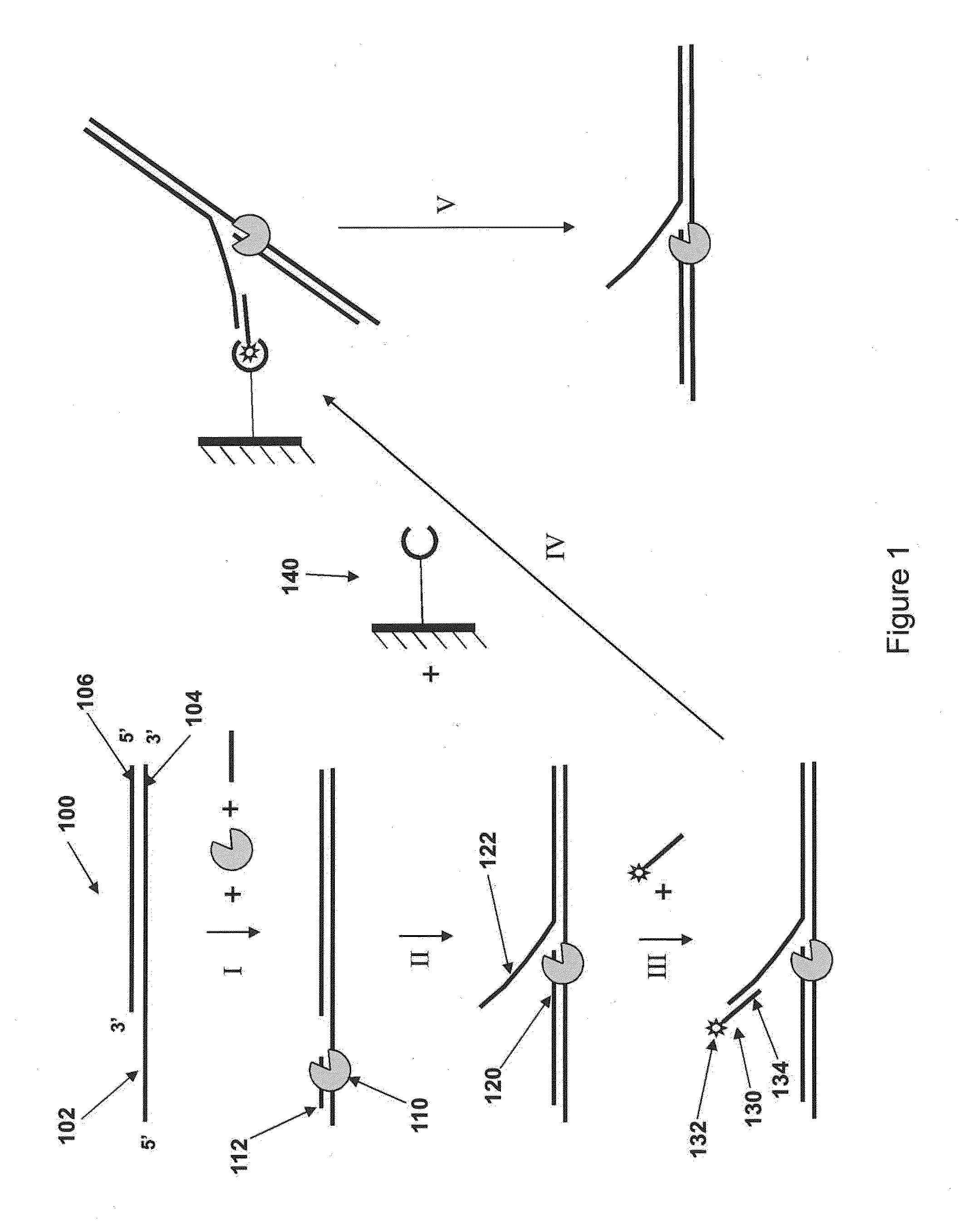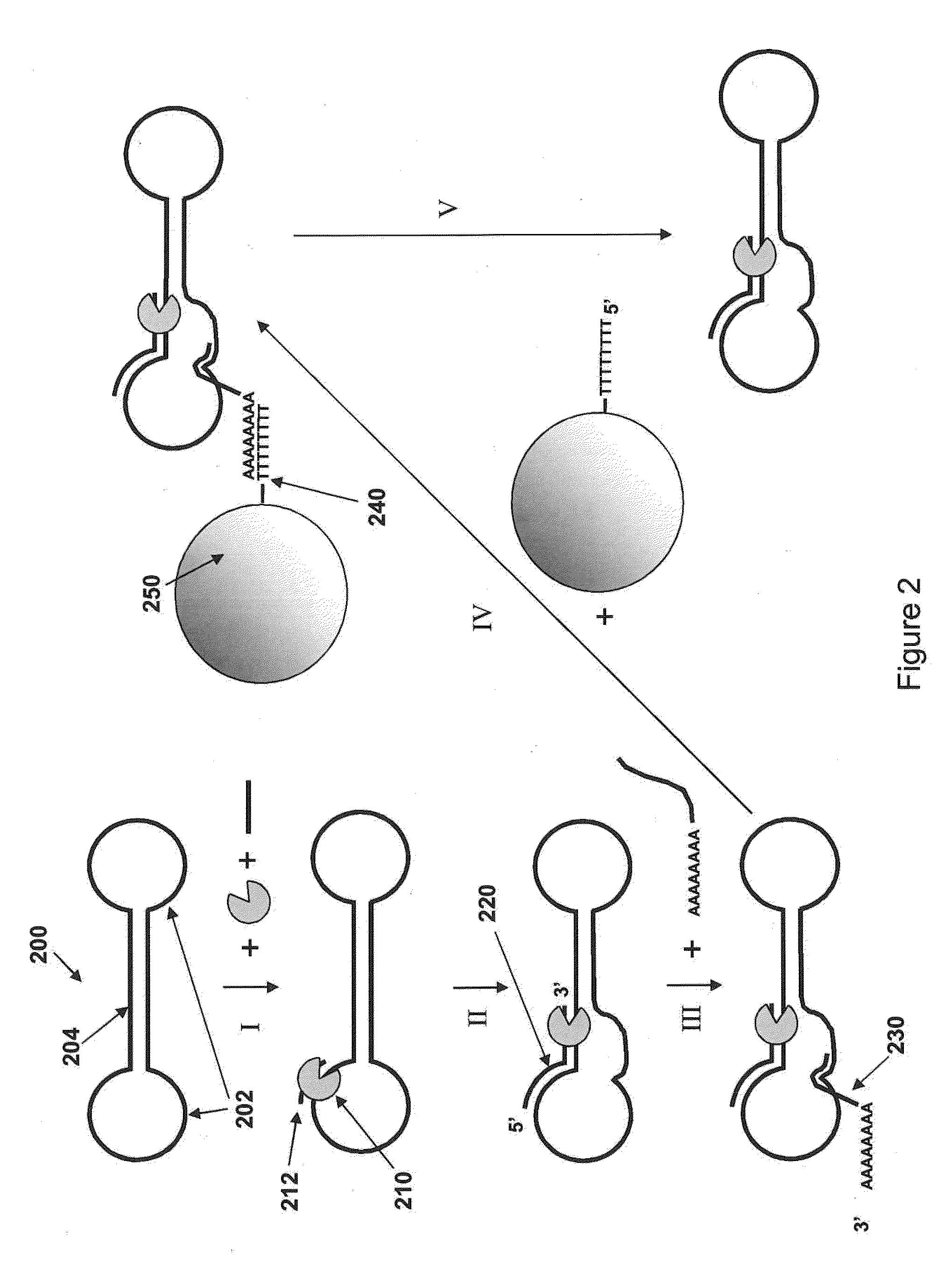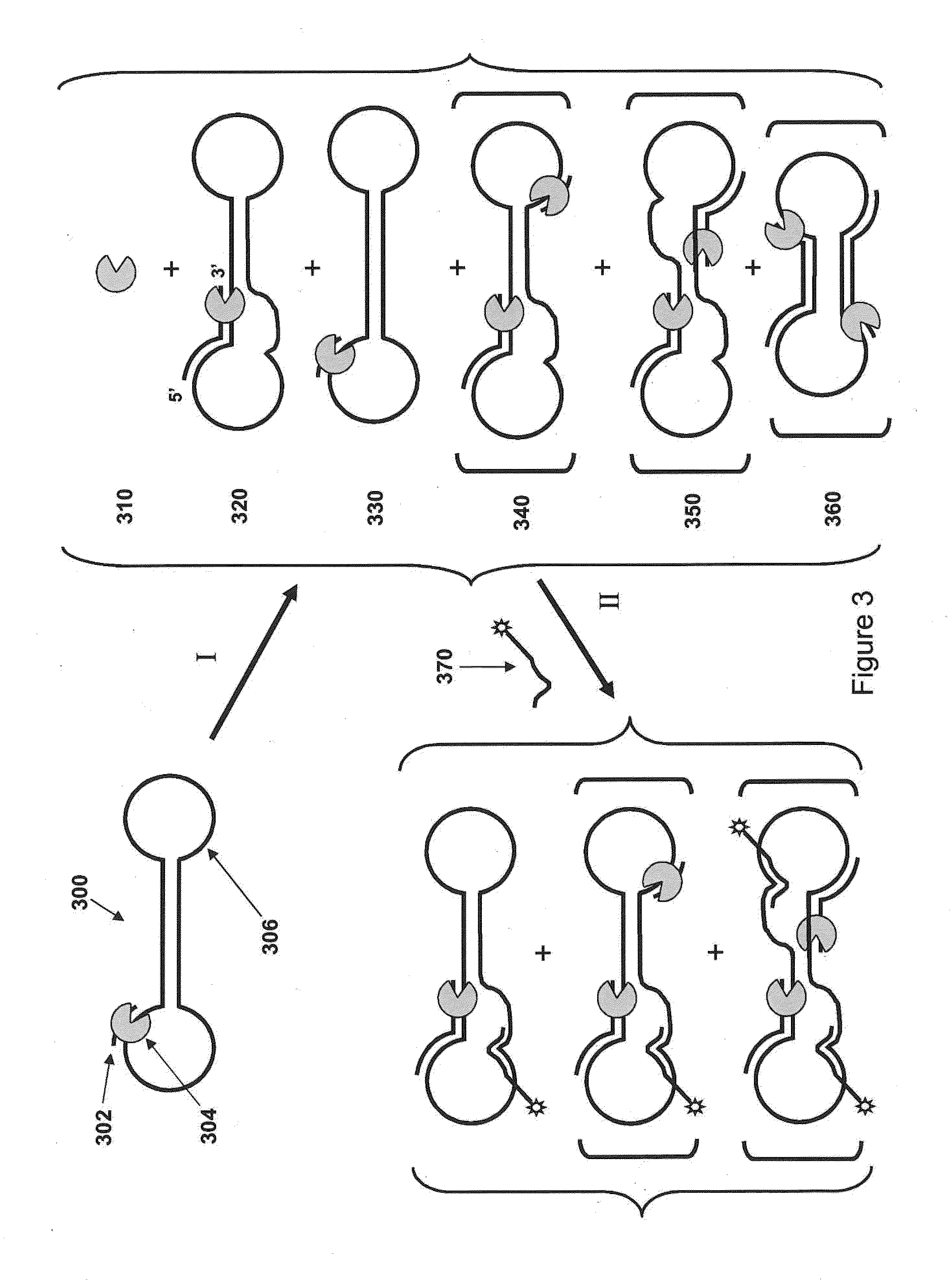Loading molecules onto substrates
a technology of molecules and substrates, applied in biochemistry apparatus and processes, instruments, library creation, etc., can solve the problems of time-consuming and extremely costly methods, and achieve the effect of halting or reducing the synthesis rate of dna
- Summary
- Abstract
- Description
- Claims
- Application Information
AI Technical Summary
Benefits of technology
Problems solved by technology
Method used
Image
Examples
example 1
Hook Capture Using a Common Hook
Polymerase-SB Template Complex Formation:
[0261]Several types of SMRTBell™ (SB) templates having the common (VD) Adaptor 5′-TCTCTCTCTTTTCCTCCTCCTCCGTTGTTGTTGTTGAGAGAGAT-3′ (SEQ ID NO: 1) (FIG. 10(A)), 2 k (Phix3-12), 1 k (PhiX9-16), 0.6 k (Bsub1), and 2 k λ-library, were individually mixed with SA-Pol (3029P) for the Pol-template binding tubes. The condition for the binding was: 3 nM SB template, 15 nM SA-Pol, 50 mM Tris acetate, pH 8.0, 0.05% (v / v) Tween-20, 20 mM potassium acetate, 0.2 mM calcium acetate, 1 μM each dNTP, and 100 mM DTT. Volume in each tube was either 0.2 mL or 1 mL. These tubes were incubated at 22° C. for approximately 16 hours. To each tube, 0.05 volume of 20 mM Strontium acetate (10 μL Sr for 200 μL tube) was added.
Samples for Enrichment:
[0262]Sample 1: A mixture of 143 pM Pol-2 k SB (PhiX3-12) and 2857 pM Pol-0.6 k SB (Bsub1).
[0263]Sample 2: A mixture of 136 pM Pol-2 k SB (PhiX3-12), 136 pM Pol-1 k SB (PhiX9-16) and 2723 pM Pol-0...
example 2
Hook Capture for Enrichment of Specific Sequences
Polymerase-SB Template Complex Formation:
[0270]Several types of SB templates, 2 k (Phix3-12), 1 k (PhiX9-16), 0.6 k (Bsub1), and 2 k λ-library, were individually mixed with SA-Pol (3029P) for the Pol-template binding tubes. The condition for the binding was: 3 nM SB template, 15 nM SA-Pol, 50 mM Tris acetate, pH 8.0, 0.05% (v / v) Tween-20, 20 mM potassium acetate, 0.2 mM calcium acetate, 1 μM each dNTP, and 100 mM DTT. Volume in each tube was either 0.2 mL or 1 mL. These tubes were incubated at 22° C. for approximately 16 hours. To each tube, 0.05 by volume of 20 mM Strontium acetate (10 μL Sr for 200 μL tube) was added.
Samples for Enrichment:
[0271]Sample 1: A mixture of 143 pM Pol-2 k SB (PhiX3-12) and 2857 pM Pol-0.6 k SB (Bsub1).
[0272]Sample 2: A mixture of 136 pM Pol-2 k SB (PhiX3-12), 136 pM Pol-1 k SB (PhiX9-16) and 2723 pM Pol-0.6 k SB (Bsub1).
[0273]Sample 3: A mixture of 150 pM Pol-2 k SB (PhiX3-12) and 3000 pM Pol-2λlibrary.
[0...
example 3
Deposition of Polymerase-Nucleic Acid Complexes with Magnetic Beads
[0281]A SMRTBell™ (SB) template, 2 k (Phix3-12), was mixed with SA-Pol (3029P) for the Pol-template binding tubes. The condition for complex binding was: 3 nM SB template, 9 nM SA-Pol, 50 mM Tris acetate, pH 8.0, 0.05% (v / v) Tween-20, 20 mM potassium acetate, 0.2 mM calcium acetate, 1 μM each dNTP, and 100 mM DTT. The volume of the tube was 0.2 mL. The tube was incubated at 30° C. for 4 hours and subsequently kept at 4° C. until ready for testing (typically within 12 hours). The contents of the tube were then split into two separate tubes of equal volume, 0.1 mL each. One tube (Sample 1) served as the control and no further modifications were made. The other tube (Sample 2) was hooked to magnetic beads in the following manner.
Sample Hook:
[0282]Heparin (Sigma, cat #H4784) was added to Sample 2 to a final concentration of 1 mg / mL and Sr was added to a final concentration of 1 mM. The tube was incubated for 30 min on ic...
PUM
| Property | Measurement | Unit |
|---|---|---|
| Diameter | aaaaa | aaaaa |
| Magnetic field | aaaaa | aaaaa |
| Magnetism | aaaaa | aaaaa |
Abstract
Description
Claims
Application Information
 Login to View More
Login to View More - R&D
- Intellectual Property
- Life Sciences
- Materials
- Tech Scout
- Unparalleled Data Quality
- Higher Quality Content
- 60% Fewer Hallucinations
Browse by: Latest US Patents, China's latest patents, Technical Efficacy Thesaurus, Application Domain, Technology Topic, Popular Technical Reports.
© 2025 PatSnap. All rights reserved.Legal|Privacy policy|Modern Slavery Act Transparency Statement|Sitemap|About US| Contact US: help@patsnap.com



